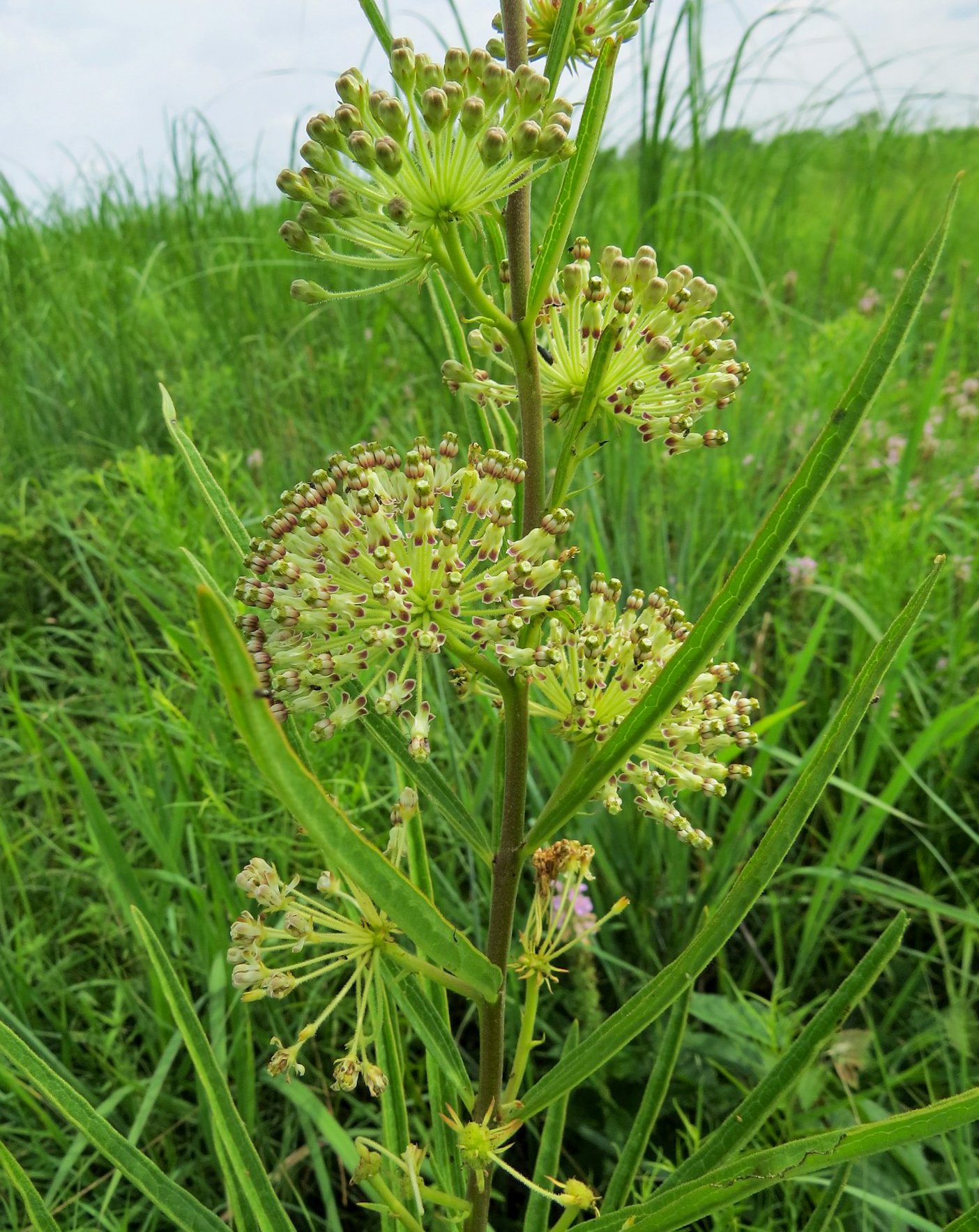 Image 1 of 6
Image 1 of 6

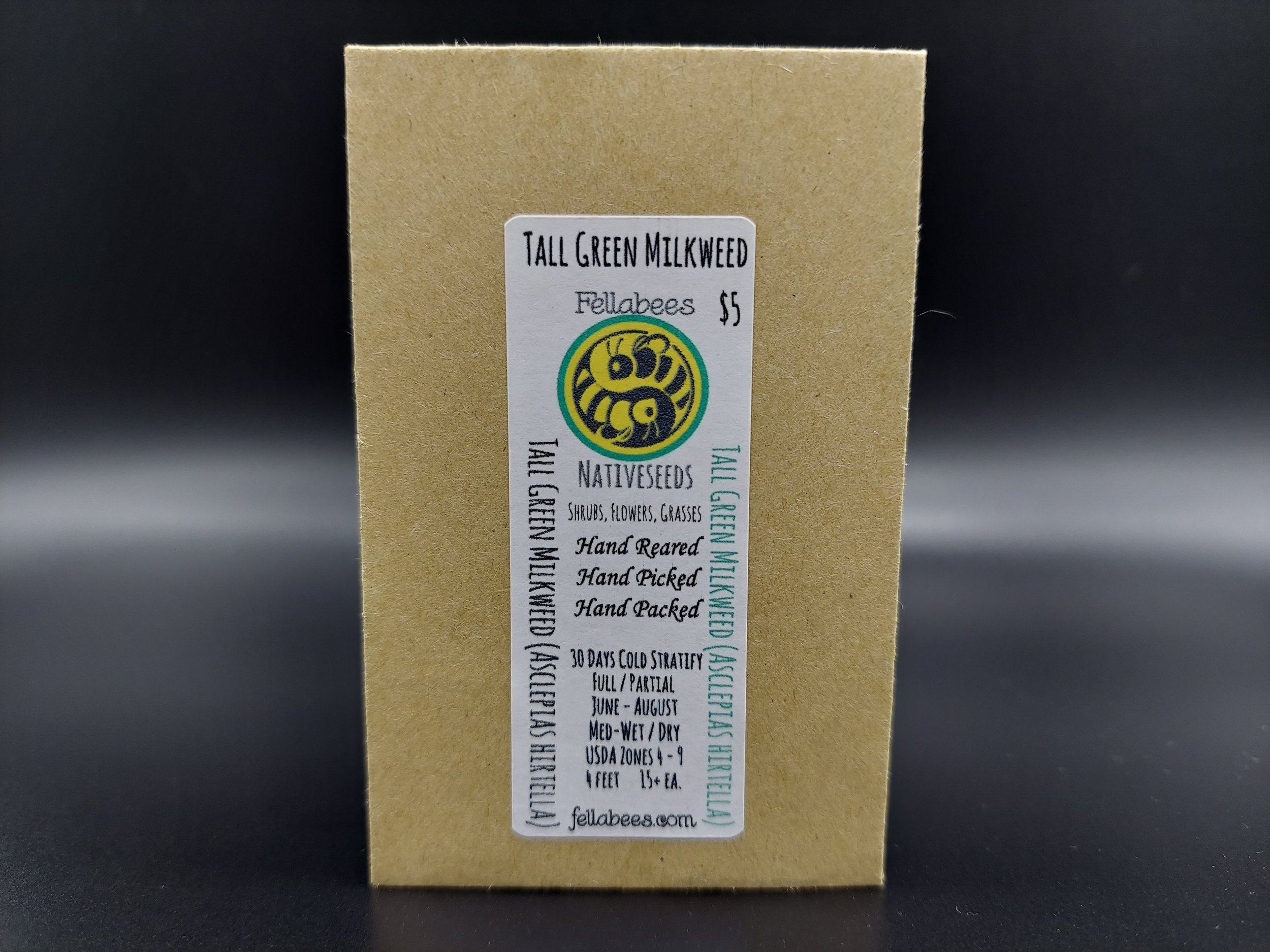 Image 2 of 6
Image 2 of 6

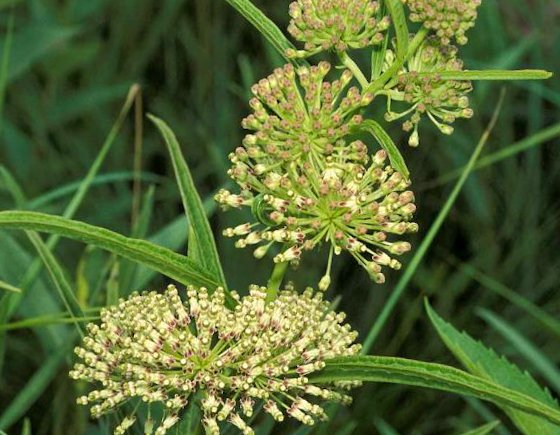 Image 3 of 6
Image 3 of 6

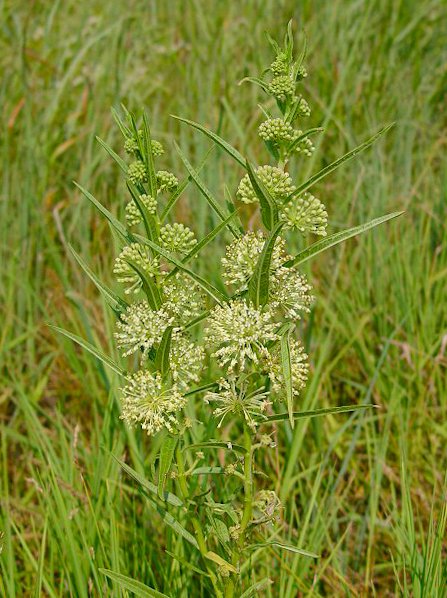 Image 4 of 6
Image 4 of 6

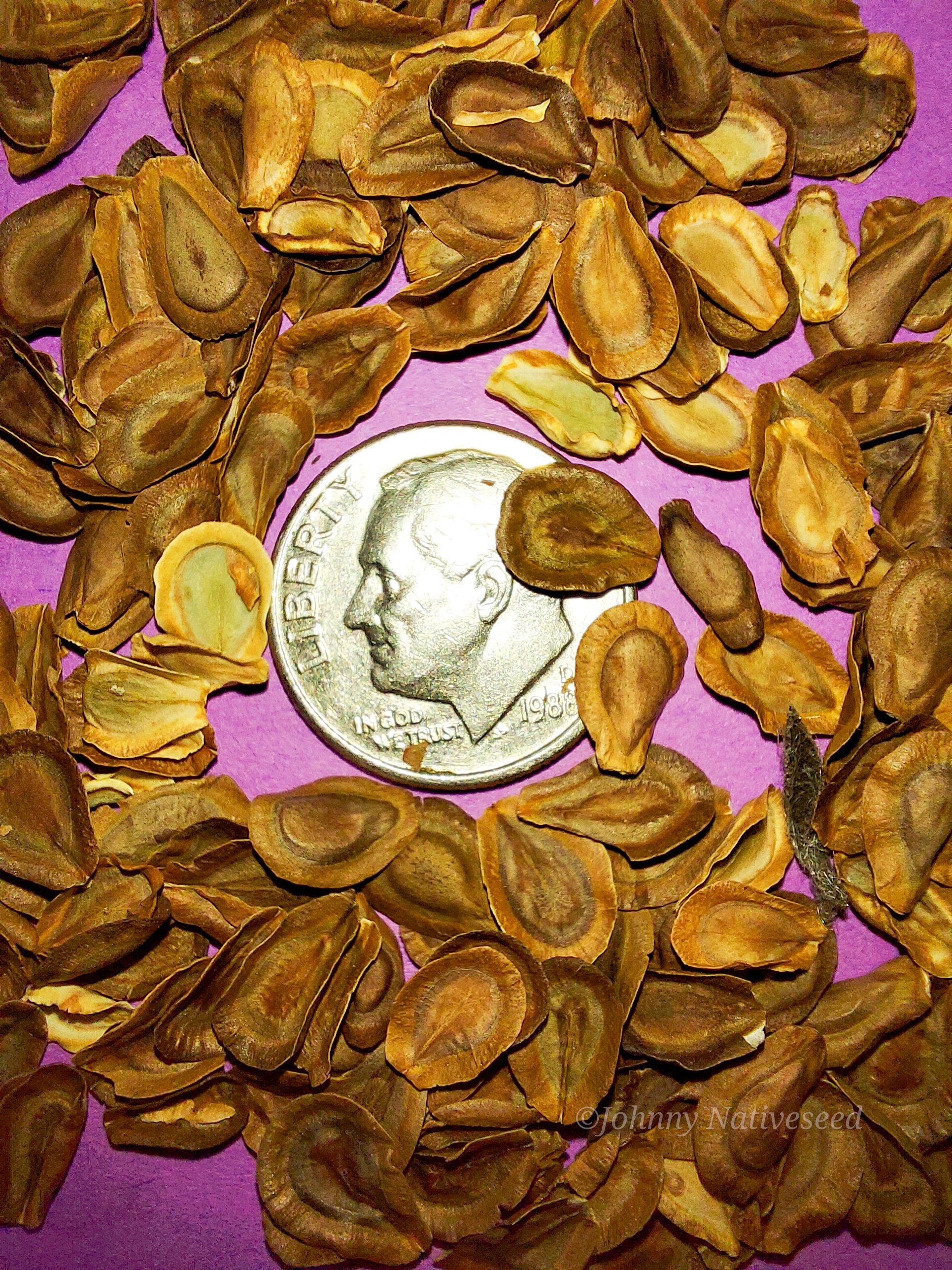 Image 5 of 6
Image 5 of 6

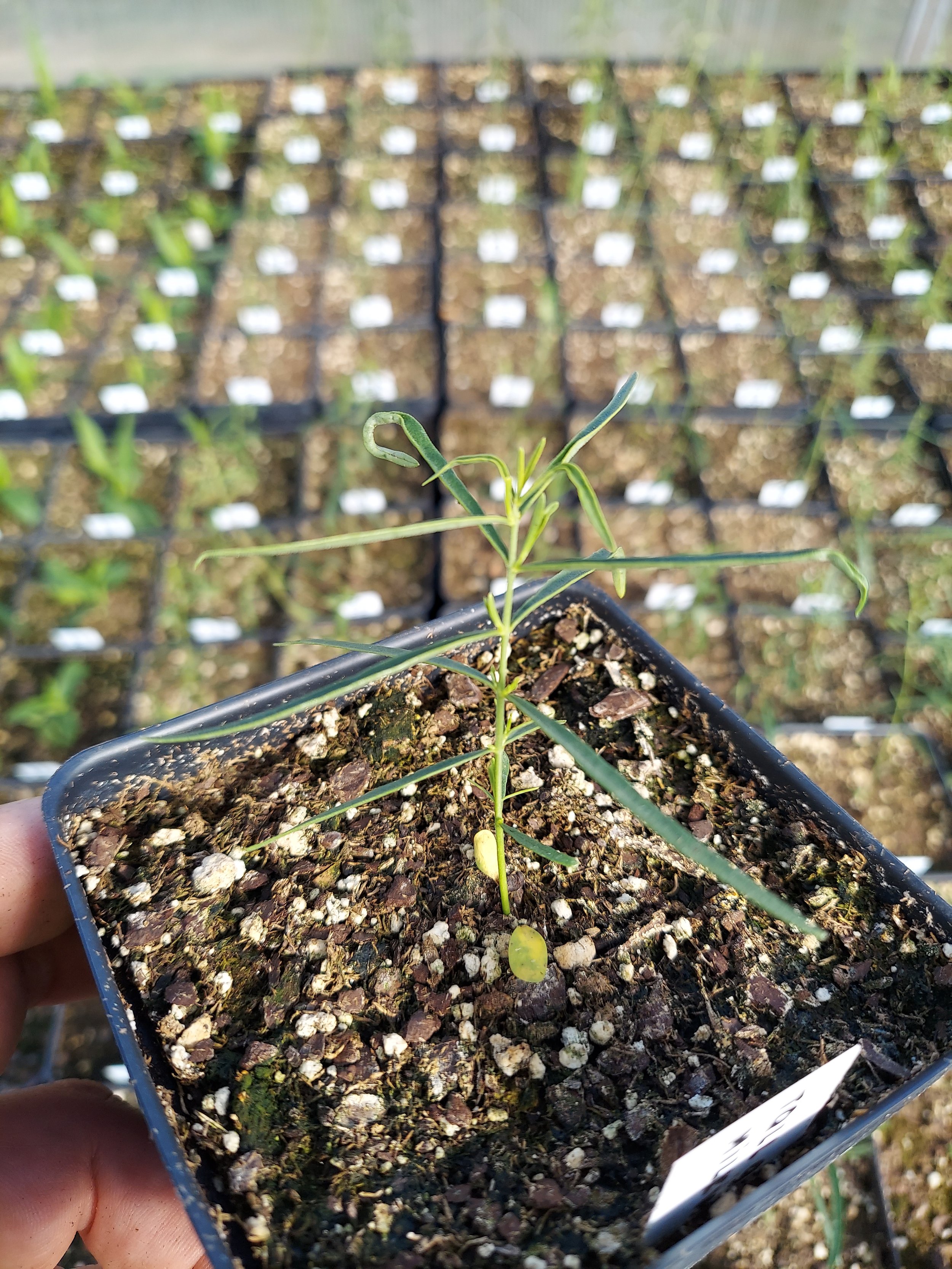 Image 6 of 6
Image 6 of 6







Tall Green Milkweed (Asclepias hirtella)
Tall Green Milkweed (Asclepias hirtella)
Asclepias hirtella, is the scientific name for the native plant commonly called Tall Green Milkweed, which is a species of flowering plant in the Milkweed genus and member of the Dogbane family, scientificly listed as (Apocynaceae).
Tall Green Milkweed is endemic to both Canada and the United States, where its range is mostly concentrated in the Midwest and Upper South.
Asclepias hirtella is a striking, and tall perennial plant, reaching 4 feet in height. It has many narrow, linear leaves that are produced alternately on the stem. Its flowers in lateral umbels with slender peduncles.
A profuse bloomer, each stem can have 2 to 10 umbels and each umbel may have 30 to 100 flowers. The flowers lack horns and are greenish to slightly purplish in color. As with most Milkweed plants Tall Green Milkweed flowers June through August, and plays host to the Monarch Butterfly.
Asclepias hirtella can be found in a variety of open habitats, including areas with dry sandy soil, such as prairies and limestone glades, it can be found enjoying both wet and dry conditions, and it shows a preference for open habitats with full sun, but can tolerate light, partial shade.
This species is often a well integrated component of high-quality grassland communities, although it can be found in and disturbed conditions as well. Spreading primarily by seed, this milkweed develops a deep taproot, rather than rhizomes. For this reason it is considered to be uncommon or rare throughout much of its range.
This plant is present but considered rare in several counties of the states (listed in order of most counties where it is rare) Wisconsin, Michigan, Louisiana, Kentucky, West Virginia, Mississippi, Alabama, and Georgia.
Plant Details
USDA Zones: 4-9
Germination Needs: 30 days Cold Stratification
Life Cycle: Perennial
Sun Exposure: Full to Partial
Soil Moisture: Medium-Wet, Medium, Medium-Dry, Dry
Plant Spacing: 1½ - 2 feet
Height: 4 feet
Bloom time: June, July, August
Bloom Color: White
Advantages :
Pollinator Favorite: butterflies, moths, bees, wasps, beetles
Bird Favorite: seeds, insects, fruit, nectar, nesting, perchs.
Deer Resistant: Yes
Native to : Wisconsin, Minnesota, Michigan, Iowa, Illinois, Indiana, Ohio, West Virginia, Kansas, Missouri, Kentucky, Oklahoma, Arkansas, Tennessee, Texas, Louisiana, Mississippi, Alabama, and Georgia.
.
.
Packet quantities:
We pride ourselves on ethical, hands on, ecological management, using no mechanical or chemical methods whatsoever.
All of our native seed is hand reared, hand picked, and hand packed from native prairies under our exclusive management, never breaking chain of custody from the field until it is sent to you. Each packet is hand prepared for shipment by us, directly.
Small seed species will contain greater than 20-25 seed
Large seed species will contain greater than 10-15 seed
It is our mission to spread the wealth of native plant and pollinator ecological sustainability, and educate back yard gardeners as well as corporate and government entities in how to germinate, grow, and benefit from native synergies.
Thank you for your support, it is because of you, that we can grow together to do, what we do.🐛🦋🐝🐞🌾🌱🌼🧡
Tall Green Milkweed (Asclepias hirtella)
Asclepias hirtella, is the scientific name for the native plant commonly called Tall Green Milkweed, which is a species of flowering plant in the Milkweed genus and member of the Dogbane family, scientificly listed as (Apocynaceae).
Tall Green Milkweed is endemic to both Canada and the United States, where its range is mostly concentrated in the Midwest and Upper South.
Asclepias hirtella is a striking, and tall perennial plant, reaching 4 feet in height. It has many narrow, linear leaves that are produced alternately on the stem. Its flowers in lateral umbels with slender peduncles.
A profuse bloomer, each stem can have 2 to 10 umbels and each umbel may have 30 to 100 flowers. The flowers lack horns and are greenish to slightly purplish in color. As with most Milkweed plants Tall Green Milkweed flowers June through August, and plays host to the Monarch Butterfly.
Asclepias hirtella can be found in a variety of open habitats, including areas with dry sandy soil, such as prairies and limestone glades, it can be found enjoying both wet and dry conditions, and it shows a preference for open habitats with full sun, but can tolerate light, partial shade.
This species is often a well integrated component of high-quality grassland communities, although it can be found in and disturbed conditions as well. Spreading primarily by seed, this milkweed develops a deep taproot, rather than rhizomes. For this reason it is considered to be uncommon or rare throughout much of its range.
This plant is present but considered rare in several counties of the states (listed in order of most counties where it is rare) Wisconsin, Michigan, Louisiana, Kentucky, West Virginia, Mississippi, Alabama, and Georgia.
Plant Details
USDA Zones: 4-9
Germination Needs: 30 days Cold Stratification
Life Cycle: Perennial
Sun Exposure: Full to Partial
Soil Moisture: Medium-Wet, Medium, Medium-Dry, Dry
Plant Spacing: 1½ - 2 feet
Height: 4 feet
Bloom time: June, July, August
Bloom Color: White
Advantages :
Pollinator Favorite: butterflies, moths, bees, wasps, beetles
Bird Favorite: seeds, insects, fruit, nectar, nesting, perchs.
Deer Resistant: Yes
Native to : Wisconsin, Minnesota, Michigan, Iowa, Illinois, Indiana, Ohio, West Virginia, Kansas, Missouri, Kentucky, Oklahoma, Arkansas, Tennessee, Texas, Louisiana, Mississippi, Alabama, and Georgia.
.
.
Packet quantities:
We pride ourselves on ethical, hands on, ecological management, using no mechanical or chemical methods whatsoever.
All of our native seed is hand reared, hand picked, and hand packed from native prairies under our exclusive management, never breaking chain of custody from the field until it is sent to you. Each packet is hand prepared for shipment by us, directly.
Small seed species will contain greater than 20-25 seed
Large seed species will contain greater than 10-15 seed
It is our mission to spread the wealth of native plant and pollinator ecological sustainability, and educate back yard gardeners as well as corporate and government entities in how to germinate, grow, and benefit from native synergies.
Thank you for your support, it is because of you, that we can grow together to do, what we do.🐛🦋🐝🐞🌾🌱🌼🧡
Tall Green Milkweed (Asclepias hirtella)
Asclepias hirtella, is the scientific name for the native plant commonly called Tall Green Milkweed, which is a species of flowering plant in the Milkweed genus and member of the Dogbane family, scientificly listed as (Apocynaceae).
Tall Green Milkweed is endemic to both Canada and the United States, where its range is mostly concentrated in the Midwest and Upper South.
Asclepias hirtella is a striking, and tall perennial plant, reaching 4 feet in height. It has many narrow, linear leaves that are produced alternately on the stem. Its flowers in lateral umbels with slender peduncles.
A profuse bloomer, each stem can have 2 to 10 umbels and each umbel may have 30 to 100 flowers. The flowers lack horns and are greenish to slightly purplish in color. As with most Milkweed plants Tall Green Milkweed flowers June through August, and plays host to the Monarch Butterfly.
Asclepias hirtella can be found in a variety of open habitats, including areas with dry sandy soil, such as prairies and limestone glades, it can be found enjoying both wet and dry conditions, and it shows a preference for open habitats with full sun, but can tolerate light, partial shade.
This species is often a well integrated component of high-quality grassland communities, although it can be found in and disturbed conditions as well. Spreading primarily by seed, this milkweed develops a deep taproot, rather than rhizomes. For this reason it is considered to be uncommon or rare throughout much of its range.
This plant is present but considered rare in several counties of the states (listed in order of most counties where it is rare) Wisconsin, Michigan, Louisiana, Kentucky, West Virginia, Mississippi, Alabama, and Georgia.
Plant Details
USDA Zones: 4-9
Germination Needs: 30 days Cold Stratification
Life Cycle: Perennial
Sun Exposure: Full to Partial
Soil Moisture: Medium-Wet, Medium, Medium-Dry, Dry
Plant Spacing: 1½ - 2 feet
Height: 4 feet
Bloom time: June, July, August
Bloom Color: White
Advantages :
Pollinator Favorite: butterflies, moths, bees, wasps, beetles
Bird Favorite: seeds, insects, fruit, nectar, nesting, perchs.
Deer Resistant: Yes
Native to : Wisconsin, Minnesota, Michigan, Iowa, Illinois, Indiana, Ohio, West Virginia, Kansas, Missouri, Kentucky, Oklahoma, Arkansas, Tennessee, Texas, Louisiana, Mississippi, Alabama, and Georgia.
.
.
Packet quantities:
We pride ourselves on ethical, hands on, ecological management, using no mechanical or chemical methods whatsoever.
All of our native seed is hand reared, hand picked, and hand packed from native prairies under our exclusive management, never breaking chain of custody from the field until it is sent to you. Each packet is hand prepared for shipment by us, directly.
Small seed species will contain greater than 20-25 seed
Large seed species will contain greater than 10-15 seed
It is our mission to spread the wealth of native plant and pollinator ecological sustainability, and educate back yard gardeners as well as corporate and government entities in how to germinate, grow, and benefit from native synergies.
Thank you for your support, it is because of you, that we can grow together to do, what we do.🐛🦋🐝🐞🌾🌱🌼🧡
